Arabica coffee
Arabica coffee
Vietnamese Arabica Coffee: Types, Growing Regions, Price & Best Suppliers
Vietnamese Arabica coffee is one of the most popular and valuable coffees around the world, especially in Europe and North America. This article will provide general information about Vietnamese Arabica coffee compiled by K-Agriculture.
1. What Is Vietnamese Arabica Coffee?
Vietnamese Arabica coffee refers to coffee beans from the Coffea arabica species that are cultivated in Vietnam. While Vietnam is best known globally for its robusta coffee production, Arabica accounts for a significant and distinct segment of the country’s coffee landscape.
Vietnamese Arabica coffee is a high-value coffee requiring harsh growing conditions. Then each stage of processing, roasting, preservation, and preparation asks strict compliance to keep the full flavor of the coffee.
2. Natural conditions for growing Vietnamese Arabica coffee
Vietnamese Arabica coffee needs appropriate natural conditions to bear high-quality cherries. The biggest advantage of Vietnam when growing coffee is that it has a humid tropical monsoon climate suitable for all coffee trees. Besides, the coffee trees need to be grown at an altitude of 900-2000m above sea level, a temperature of 15-24 degrees, and an annual rainfall of about 1200-2200. Therefore, Arabica coffee is only available in certain regions in Vietnam.
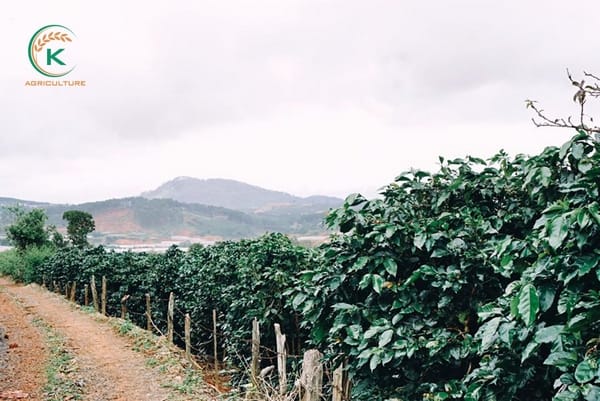
3. Where Vietnamese Arabica Coffee Is Grown (Top Regions)
The amount of Vietnamese Arabica coffee land accounts for only 6% of the total coffee growing area in Vietnam.
The Vietnamese Arabica coffee growing area is concentrated in some areas such as Son La, Dien Bien, Lam Dong, and Quang Tri.
Lam Dong
Lam Dong is the largest Vietnamese Arabica coffee growing area. In particular, Arabica Cau Dat has very high quality and is known as the “Queen of Vietnamese coffee“, one of the most delicious Arabica coffees in the world. The first coffee variants grown in Cau Dat such as Yellow Bourbon, Typica are interested and desired by many coffee connoisseurs.
- Natural conditions: Coffee growing area in Cau Dat is about 1,100ha. An altitude of over 1,600m above sea level, along with a cold, foggy climate all year round makes Cau Dat, Da Lat become a paradise for Arabica coffee trees.
- Taste: mild sour taste, bitterness creates elegance, nobility; light brown coffee color like amber creates luxury and charm.

Son La, Dien Bien
- History: Dien Bien and Son La are two provinces with a hundred-year history of growing Arabica coffee. At the end of the 19th century and the beginning of the 20th century, the French planted coffee in Dien Bien and Son La, which became a Vietnamese Arabica coffee production area providing important raw materials for the coffee industry in France at the time there.
- Natural conditions: Son La Arabica coffee is grown on slopes at the low mountains’ foot or on hills with altitudes from 900m to 1200m. Son La, Dien Bien coffee-growing area has similar soil as the Sao Paulo region of Brazil. Son La’s climate is rainy and cold so Vietnamese Arabica coffee trees here grow well for high quality. Son La is the second-largest Arabica coffee growing province in Vietnam after Lam Dong with over 20,000 hectares, with an output of 30,000 tons per year. In particular, although not grown in basalt red soil and not at an ideal height as the Central Highlands provinces, Son La has soils in the red-yellow group that is suitable for coffee.
- Target market: Son La coffee products are now well-known in the domestic and foreign markets such as Japan, Taiwan.
- Taste: the smell of fresh chili that cannot be found anywhere else.
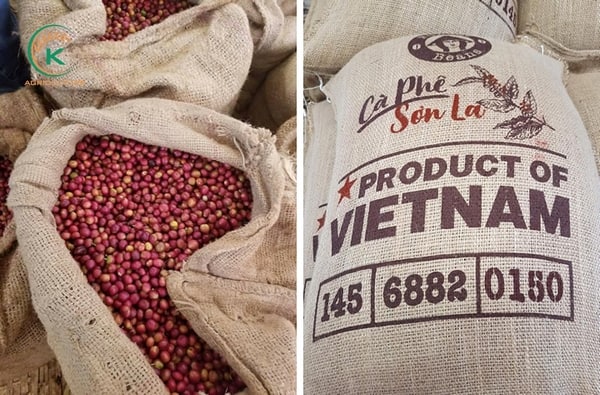
Quang Tri
For a long time, Vietnamese Arabica coffee growing land in Quang Tri was neglected, but around 2011-2012, Arabica coffee was focused on development. To this day, Quang Tri is famous around the world for its Arabica Khe Sanh specialty coffee.
- Natural conditions: Quang Tri has a tropical monsoon climate, high temperature, lots of light, rain, humidity, which is favorable for coffee cultivation. Quang Tri has about 5,000ha of coffee growing area with an average altitude of 350-500m above sea level.
- Taste: Arabica has a unique chocolate-like aroma and a hint of saltiness, which is only found in Quang Tri coffee.
- Economic profitability: Quang Tri Arabica coffee has high economic value and great development opportunities. In particular, the Khe Sanh Arabica coffee product won the first prize at the “Vietnam Specialty Coffee Contest 2021” organized by the Buon Ma Thuot Coffee Association.
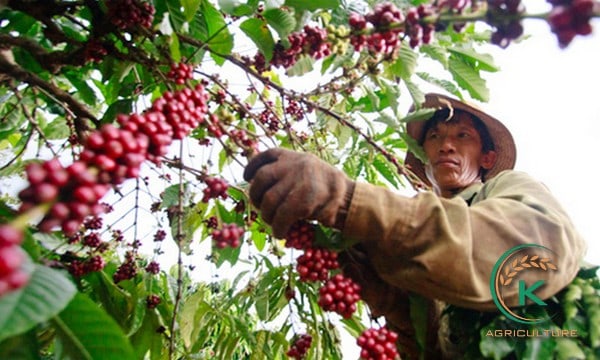
4. Vietnamese Arabica Coffee Processing & Handling
4.1. Processing Methods
Vietnamese Arabica coffee is processed by different methods such as dry, washed or honey coffee process depending on different regions.
- In Lam Dong, to enhance the sweetness of the beans, washed or honey coffee processing methods are prioritized.
- All coffee in Son La is processed by a washed processing method to help ensure the intrinsic quality of coffee beans, resulting in green coffee products with uniform color and quality, so the coffee is always of good quality and high commercial value.

4.2. Roasting Methods
Depending on each drinkers’ purpose, there are two popular Arabica coffee roasting methods including butter roasted coffee and rustic roasted coffee.
- Rustic roasted coffee is more popular than butter roasted coffee because it is good for health. Rustic roasted coffee will retain the originality and natural aroma, sourness and richer taste than butter roasted coffee because the smell of butter has reduced the inherent flavor of coffee beans. For those, who have heart disease but still drink coffee, they tend to choose diluted rustic roasted coffee to drink. And coffee connoisseurs also choose unsweetened roasted coffee with high Arabica content.
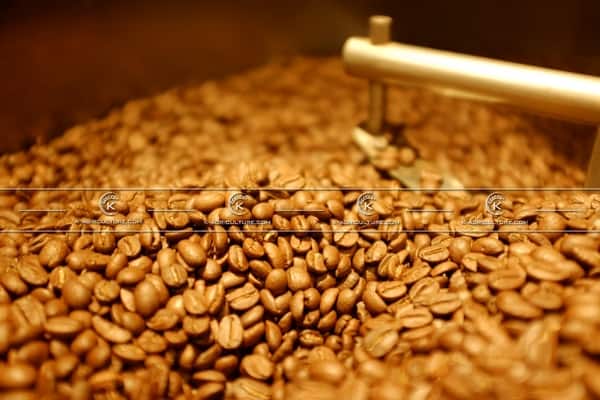
- Butter roasted coffee beans is a roasting technique combined with butter. Vietnamese Arabica coffee beans are more glossy when roasted with butter. Roasted with butter for a more aromatic taste, combined with the pure flavor from the coffee beans will be an impressive taste for drinkers. Butter roasted coffee beans are suitable for the filter method, not for machine brewing.
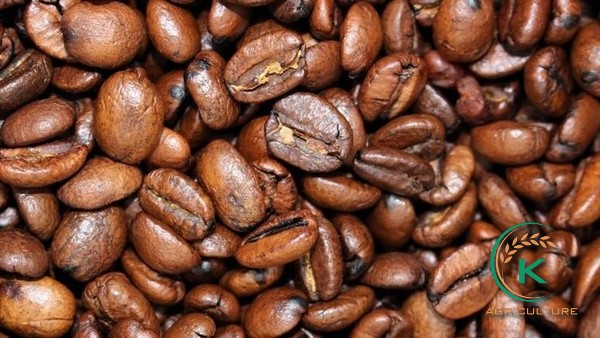
4.3. Preserving Methods
Coffee aroma is very easy to fade. To preserve the aroma of coffee, it should be stored in a sealed glass jar and used within 1 month after roasting.

4.4. Preparing Methods
Arabica coffee is most popular when making Espresso. To balance the sour and bitter taste in coffee, people often mix Arabica with Robusta. Each blend ratio between Arabica and Robusta coffee will bring a unique taste of coffee.
- The ratio of (Arabica-Robusta):(70-30), coffee will have a balanced taste, mild bitterness, sour aftertaste.
- The ratio of (Arabica-Robusta):(30-70), coffee will have a medium bitter and mild sour taste.
- The ratio of (Arabica-Robusta):(80-20), coffee will have a sour and mildly bitter taste.

5. Types of Vietnamese Arabica coffee
Moka and Catimor are two popular Vietnamese Arabica coffee. These types of coffee are grown mainly in Cau Dat, Lam Dong – where the best Arabica coffee is grown in Vietnam.
5.1. Moka
Moka is the most difficult coffee variety to grow, requiring careful husbandry. In Vietnam, Moka is a scarce coffee, always priced higher than other types of coffee.
Moka coffee trees grow and develop at an altitude of 1500m, so they are mainly concentrated in Cau Dat, Lam Dong.
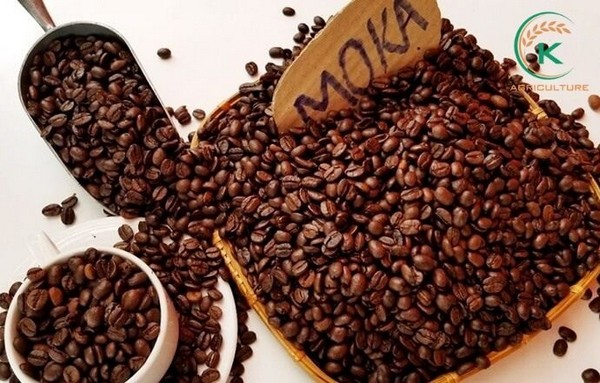
5.2. Catimor
Catimor is a hybrid of Timor’s Hybrid deoxyribonucleic acid with the Caturra. Catimor is a low-growing tree with short branches and the ability to grow thickly. The outstanding advantage of this variety is Hemileia vastatrix.
Catimor has a passionate aroma, slightly sour taste, the export price is twice that of Robusta. Because of the economic benefits, this Vietnamese Arabica coffee variety is now being grown popularly in major coffee regions such as Lam Dong, Dak Lak, Dak Nong, Quang Tri, Nghe An, Son La.
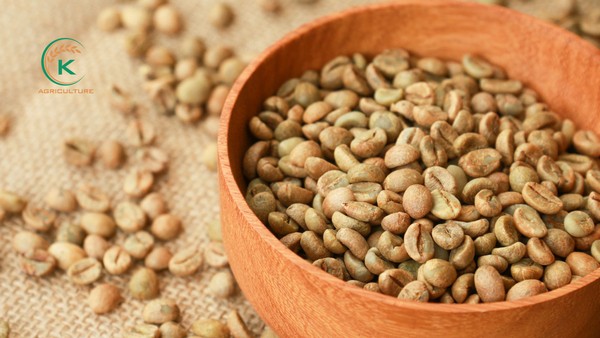
5.3. Typica
Typica is one of the earliest Arabica varieties introduced to Vietnam and is valued for its elegant flavor profile, lower yield, and high cup quality. Although it is not as widely cultivated as Bourbon or Catimor due to its lower productivity and weak disease resistance, Typica remains a premium choice for roasters seeking cleaner, more delicate Arabica beans from Vietnam.
If targeting the mass market or commercial blends, Catimor may be more cost-effective, but Typica remains the best Vietnam Arabica for premium and specialty coffee.

6. Characteristics of Vietnamese Arabica coffee
Vietnamese Arabica coffee has the characteristics to become one of the best quality Arabica coffee in the world.
6.1. Quality Standards
Vietnamese Arabica coffee beans have a fairly uniform quality. Before being released to the market, they all meet in terms of form and quality.
| Shape | Elliptical, wavy groove |
| Color |
|
| Grade | S16-18 |
| Moisture | 11,5% – 12,5% |
| Caffeine content | 0.8 – 1.5% |
6.2. Taste Profile
Although Arabica coffee tastes sour, it does not have a totally sour taste. After drinking it, coffee will have a mildly bitter aftertaste.
6.3. Aroma Profile
Vietnamese Arabica coffee has a sweet and soft aroma. The aromas of Arabica coffee are also different depending on the climate and farming conditions. It can also have the attractive aromas of floral, fruity, chocolate, honey or the aroma of toasted bread.
Related: Prestigious wholesale Arabica coffee beans suppliers in the world
7. Vietnamese Arabica Coffee Price 2025 (Updated)
In 2025, Vietnamese Arabica coffee prices experienced significant fluctuations driven by global market volatility, high demand, and rising production costs.
Below is a summary of the latest updated Vietnamese Arabica Coffee price list 2025:
| Type / Grade | Processing Method | Price (VND/kg) | Price (USD/kg) | Export Price (USD/ton) |
|---|---|---|---|---|
| Arabica G1 Specialty | Washed / Honey | 180,000 – 260,000 | 7.2 – 10.4 | 7,200 – 10,400 |
| Arabica G1 (Screen 16–18) | Washed | 150,000 – 180,000 | 6.0 – 7.2 | 6,000 – 7,200 |
| Arabica G2 | Washed | 135,000 – 150,000 | 5.4 – 6.0 | 5,400 – 6,000 |
| Arabica Natural (Commercial) | Natural | 120,000 – 140,000 | 4.8 – 5.6 | 4,800 – 5,600 |
| Arabica Honey (Premium) | Honey | 150,000 – 200,000 | 6.0 – 8.0 | 6,000 – 8,000 |
| Micro-lot / Single Origin (Da Lat, Son La) | Washed / Honey / Natural | 220,000 – 350,000 | 8.8 – 14.0 | 8,800 – 14,000 |
(Vietnamese Arabica Coffee Price Table 2025 – Estimated)
| Grade & Origin | Roast Level | Retail Price (VND) | Retail Price (USD) | Wholesale (USD/kg) |
|---|---|---|---|---|
| Standard Arabica | Medium Roast | 80,000 – 140,000 | 3.10 – 5.42 | 6.00 – 9.00 |
| Standard Arabica | Dark Roast | 90,000 – 160,000 | 3.48 – 6.20 | 6.50 – 9.50 |
| Premium Arabica (Screen 18) | Medium/Dark | 120,000 – 200,000 | 4.65 – 7.74 | 10.00 – 12.00 |
| Specialty (Cầu Đất/Da Lat) | Medium Roast | 150,000 – 300,000 | 5.81 – 11.62 | 12.00 – 15.26 |
| Single-Origin Pacamara | Medium/Dark | 200,000 – 400,000 | 7.74 – 15.49 | 14.00 – 18.50 |
| Premium Microlot | Specialty Roast | 250,000 – 500,000+ | 9.68 – 19.37+ | 15.26 – 25.00+ |
(Vietnamese Roasted Arabica Coffee – Retail & Wholesale Pricing)
Conversion Notes for Full Kilogram Pricing:
- 250g unit prices × 4 = approximate 1kg retail price
- Specialty Arabica 1kg retail range: 480,000 – 1,600,000+ VND
- Wholesale bulk pricing (100kg+): discounts of 10-20% typically apply
| Blend Composition | Wholesale Price (USD/kg) | Flavor Profile | Applications |
|---|---|---|---|
| 70% Robusta / 30% Arabica | 4.00 – 5.50 | Bold body with enhanced aromatics | Espresso, Traditional Vietnamese coffee |
| 60% Robusta / 40% Arabica | 4.50 – 6.00 | Balanced, refined acidity | Specialty café blends, Modern brewing |
| 50% Robusta / 50% Arabica | 5.00 – 7.00 | Smooth complexity, pleasant aftertaste | Premium café applications |
| Custom Vietnamese Blend | Contact for quote | Tailored to specifications | B2B partnerships, White-label products |
8. Economic profitability of Vietnamese Arabica coffee
Vietnamese Arabica coffee in the last 7-10 years has been increasingly invested in both quantity and quality, especially in provinces such as Son La, Quang Tri, Lam Dong.
8.1. High economic profitability
The price of Arabica coffee in the international market is often double the price of Robusta coffee and in Vietnam is no exception. High demand and high price are great opportunities for Vietnam to enter the Arabica coffee market.
Having a reputation as the country with the second largest coffee export volume in the world, this is both an opportunity and threat of Vietnamese Arabica coffee. The state is aiming to not only promote the cultivation and development of Arabica coffee but also ensure the quality requirements of demanding importing countries such as the EU and the US.

8.2. Arabica specialty coffee
Vietnamese specialty coffee beans recognized by international standards are some varieties of Arabica like Specialty Arabica Khe Sanh, marking a major turning point in efforts to develop Vietnam’s coffee industry.
Experts estimate that if Vietnam can bring Arabica specialty coffee to the international market, it will be a competitive coffee product and help Vietnam promote long-term economic development.
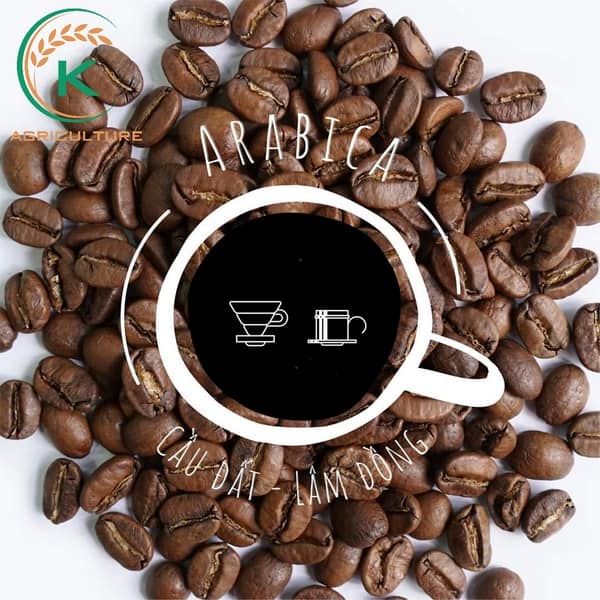
9. How to Choose High-Quality Arabica Coffee for Export
Sourcing Arabica for export requires looking beyond taste alone. A few key factors can help you quickly identify whether a lot is truly export-quality. Below are the essentials to check.
- Start with the grade and uniformity:
For export, the first thing to check is the grade. Lots that meet G1 with screen size 16-18 and low defect counts usually deliver the most consistent results during storage and transport. Uniform beans roast more evenly, so avoid lots with mixed sizes or too many broken beans. - Pay attention to the processing method:
Washed Arabica is the safest choice for most buyers because it gives a clean, bright cup and carries fewer fermentation risks. Honey and Natural coffees can be excellent, but only when the producer manages drying carefully-otherwise you may end up with over-fermented or moldy flavors. - Check moisture and physical condition
Ideal moisture for export is 10-12%. Take a close look at the beans themselves: avoid lots with too many black beans, insect damage, or foreign materials. Small physical defects may seem minor, but they can show up clearly after roasting. - Ask for the cupping profile
A reliable export-grade lot should come with a cupping report, ideally from a certified Q Grader. Look for clarity, sweetness, balance, and the absence of off-notes. For specialty Arabica, a cupping score above 80 points is a good benchmark. - Consider the origin
Origin matters. Arabica from Da Lat, Son La, and Dien Bien often shows more consistent quality thanks to higher altitude and cooler climates. If you’re looking for bright acidity or floral notes, Da Lat is usually the best place to start. - Evaluate the supplier, not just the coffee
Exporting coffee involves paperwork, quality checks, packing standards, and reliable logistics. Work with suppliers who are transparent with certificates (CO, CQ, moisture reports), allow pre-shipment inspections, and communicate clearly. Good suppliers save you more trouble than good beans alone. - Review packaging and shipment practices
Arabica is sensitive to moisture and odors, so for export you should request jute bags with GrainPro liners. Some markets, especially the EU and US, may also require strict regulations on residue levels, fumigation, and pest control-make sure your supplier meets those requirements.

10. Where you can find the Vietnamese Arabica coffee
Vietnamese Arabica coffee is now widely available, and consumers may get it on the internet by searching Google or finding on popular international E-commerce platforms like Amazon or Alibaba. Agricultural trade fairs organized by the government are also a perfect choice if buyers want to buy coffee beans in bulk.
11. Top Vietnamese Arabica coffee suppliers
The top 3 reputable Vietnamese Arabica coffee suppliers that many coffee connoisseurs believe to buy are recommended below.
11.1. K-Agriculture Arabica coffee suppliers
With a 25-year history of delivering Vietnamese agricultural products to the world, K-Agriculture supplies a big amount of Vietnamese Arabica coffee beans with high value to many coffee importing countries such as Germany or South Africa.
Before being imported to international markets, the products are carefully picked by hand and processed by special methods to ensure the quality of each coffee bean.
Contact information:
- Phone: +84 855555837
- (Whatsapp Available)
- Website: kagriculture.crackoffice.site/
- Email: info@k-agriculture.com
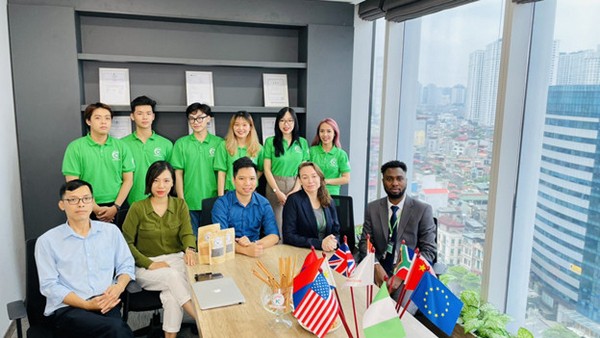
11.2. Trung Nguyen Legend
Trung Nguyen is a business group producing, processing, and distributing coffee in Vietnam. Founded in 1996, this firm has had a lot of high-quality products and has been presented in more than 60 countries around the world.
Vietnamese Arabica coffee beans of Trung Nguyen Legend have been exported to many different countries in the world and received many good feedbacks.
11.3. Wscafé suppliers
Wscafé is a Vietnamese wholesale coffee business that supplies wholesale products and provides best-in-class services.
Deserving to be one of the leading coffee export companies in Vietnam, Vietnamese Arabica coffee of Wscafé has unique tastes that nowhere has.
Vietnamese Arabica offers diverse flavors, reliable quality, and strong export potential when sourced carefully. By understanding its varieties, processing methods, pricing, and quality standards, buyers can choose the right beans with confidence and build long-term, consistent supply relationships.


